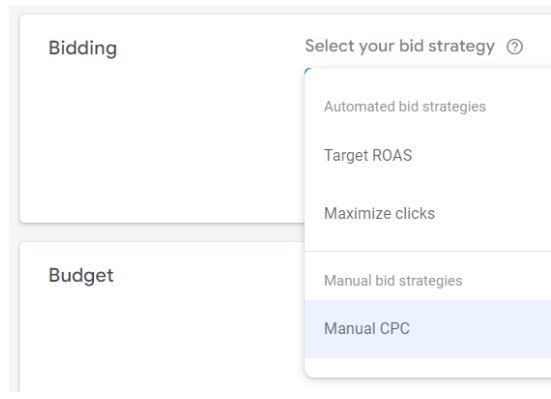Psychographic market segmentation involves breaking down a market into smaller consumer groups that share personality traits, values, attitudes, interests, and lifestyles. 🎯
This approach offers deeper insights into consumer motivations and can be leveraged by businesses to craft highly personalized and effective marketing strategies, messaging, and products. 📈
The outcome of utilizing psychographic profiles includes heightened brand loyalty, increased sales volume, and a higher average order value. 🚀
Smart marketers understand that the key to successful marketing lies in connecting with their target audience on a level that transcends mere demographics. 🎯
Psychographic segmentation is a marketing strategy that classifies consumers based on their personality, values, interests, lifestyle, and social status. It unveils consumer behavior and lifestyle patterns, empowering marketers to create laser-focused and customized marketing campaigns to engage their ideal audience effectively. 📊
Some typical psychographic variables for market segmentation are:
- Personality: This encompasses traits like extroversion, openness, agreeableness, conscientiousness, and neuroticism.
- Values: Consumers often act according to personal values, like achievement, security, or creativity.
- Attitudes: These reflect a consumer’s overall evaluation of a product or brand, including their opinions and beliefs.
- Interests: This pertains to consumers’ hobbies, pastimes, and leisure activities.
- Lifestyle: Lifestyle includes how people live, encompassing their social and economic status, as well as the activities and interests that define their daily routines. 🌟
By understanding the psychographic profiles of your target audience, you can craft messages that deeply resonate with consumers, foster stronger brand loyalty, and ultimately drive sales and revenue. 💰
🔍 Can Demographics and Psychographics Complement Each Other in Segmenting Marketing Campaigns?
Absolutely! Demographics and psychographics can work hand in hand to segment marketing campaigns.
Demographics + Psychographics = Marketing Magic! ✨🎯
Demographic segmentation categorizes a market based on characteristics like age, gender, income, education, and occupation.
On the other hand, psychographic segmentation classifies a market based on personality, values, attitudes, interests, and lifestyles.
Combining both demographics and psychographics provides a comprehensive view of the market, enabling companies to design highly targeted and personalized marketing strategies. 🎯
For instance, a company selling high-end fashion products might segment its market using demographic traits such as age and income alongside psychographic characteristics like values (luxury and exclusivity) and lifestyle (fashion-conscious and trendy).
Moreover, psychographic segmentation can be used to create segments within various geographic, demographic, or behavioral categories. This helps companies identify specific subgroups within their target audience that share similar psychographic characteristics, allowing them to tailor marketing strategies for each segment. 🎁


Cracking the Code of Consumer Behavior: The VALS Framework Unveiled! 🚀
🌟 What’s a cool way to understand and group people based on their unique preferences and lifestyles? Well, enter psychographic data! It’s all about tailoring your marketing to fit individual tastes. 🎯 And one popular tool for this job is the VALS (Values, Attitudes, and Lifestyle) framework. 😎
📆 VALS debuted in 1978, thanks to SRI International (formerly known as the Stanford Research Institute). Since then, it’s become a rockstar in understanding how consumers behave and predicting their choices through psychographic segmentation.
🔄 In 1989, VALS got a makeover, categorizing consumers into eight distinct groups, each based on their values, attitudes, and lifestyles:
- Innovators
- Thinkers
- Achievers
- Experiencers
- Believers
- Strivers
- Makers
- Survivors
🤔 Why Do Brands Use the VALS Framework?
VALS is like a super-sleuth for understanding your audience. It goes beyond the surface and dives deep into what makes them tick. 🧐 It lets brands see the world through their customer’s eyes, understanding their motivations, passions, and dreams.
With this knowledge, brands can create marketing strategies that really hit the mark. 💓 Messages that align with their values, dreams, and lifestyles. 🚀
These marketing campaigns don’t just reach customers; they inspire them, engage them, and get them to take action. 🙌
So, VALS isn’t just a segmentation tool; it’s a journey of discovery. It’s your path to understanding your target audience on a soul-deep level. With VALS, your marketing strategies become not just effective but truly unforgettable. 🌠
🔍 The VALS framework covers a lot of ground when it comes to psychographic segmentation, considering factors like:
- Primary Motivations: What drives your audience, whether it’s an achievement, personal growth, or social status?
- Resources: Understanding their financial, educational, and social standing and how it influences their lifestyle and spending habits.
- Emotional State: Getting to the heart of their emotions, like security, confidence, and anxiety.
- Self-Orientation: Understanding their self-image, beliefs, and aspirations.
So, if you want to truly get your audience and make marketing strategies that resonate with their very core, then VALS is the one for you. 🌟😊
Example of Psychographic Segmentation🎯
An example of psychographic segmentation is a company that sells high-end sports equipment, targeting consumers who are adventurous, competitive, achievement-oriented, active, and health-conscious.
The company then segments its market based on the following psychographic variables:
- Personality: Consumers who are adventurous and competitive, with a desire for personal achievement 🌍
- Values: Customers value personal improvement and physical fitness 💪
- Interests: Interested in outdoor activities and fitness 🏞️
- Lifestyle: People who lead an active and health-conscious lifestyle 🏋️♀️
🚀 The marketing campaign practically writes itself, and by better understanding the psychographic profile of its target audience, the company can achieve stronger results.
For instance, the company could offer special promotions and discounts to its targeted segment or create tailored social media campaigns that showcase its products in use by adventurous and active consumers.
Moreover, the company could collaborate with fitness influencers 💪 or organize events for fitness enthusiasts 🏋️♂️ to create a deeper connection with its target audience.
🔧 Additionally, the company could use its understanding of the psychographic characteristics of its target audience to inform product design and development.
For example, it might create new products that cater to the adventurous and competitive nature of its target segment or incorporate features that appeal to consumers who value personal improvement and physical fitness.
This approach enables the company to create a more personalized and effective marketing strategy.











Leave feedback about this